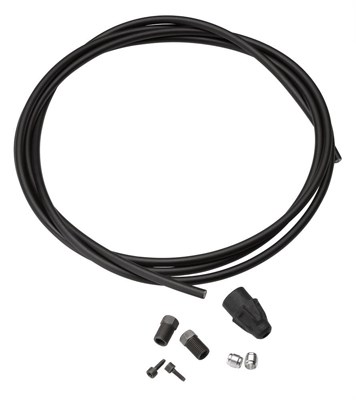Brakes are an essential component to any bike, you want them to be working well at all times and should be given regular maintenance and cleaning. Brake pads wear out, cables stretch and hydraulic systems need bleeding. A well-maintained brake set will not rub and rob you of efficiency and leg strength but will be there to stop and control your speed when needed.
Brake Fluid
Brake fluid is essential for any hydraulic brake system to function correctly. It must be bled of air bubbles and changed periodically. To do this replacement brake oil is needed.
The type of brake fluid needed is dependant on the brand of brake being used and is not cross-compatible, the appropriate fluid must be used. For example, Shimano brakes use Mineral oil while SRAM brakes use DOT 5.1 fluid. When bleeding the system, shortening the hoses, or changing the fluid the correct fluid must be used.
Shop Brake Fluid

Brake Levers
Brake levers attach to the handlebar and connect to the brake calliper either by hydraulic hose or a cable. A hydraulic lever must be used with a hydraulic brake and a cable lever with a cable brake, they are not cross-compatible. MTB and Hybrid brake levers are made for flat handlebars while road bike brake levers are made for drop handlebars found on road bikes.
It is best to use the same brand of brakes throughout the system. For example, if you have a Shimano brake then use a Shimano brake lever.
Shop Brake Levers

Brake Mounts
Brake mounts are primarily used to mount a disc brake calliper to a frame or fork. There are three main types of mount and three main types of calliper. The three types are Post, IS and Flat mount. There is a brake mount for almost any combination. For example, a fork with an IS mount and a brake that uses a post-mount will require an IS to Post adaptor that allows the two types to connect.
An adaptor will also be needed if you are changing the size of the brake rotor. A fork or frame will be designed to work with a particular sized rotor without a need for an adaptor, this will be the smallest possible size rotor for that frame or fork. If adding a bigger rotor then the calliper will need to sit further away from the frame/fork to accommodate the larger rotor, an adaptor for the new sized rotor will be needed.
Shop Brake Mounts

Brake Pads
Brake pads are the part that makes contact with the disc or rim to slow you down. Disc brake pads are unique to the type of disc brake calliper being used and are not interchangeable. They are available in different compounds for different conditions.
V-Brake pads have a threaded bolt attached to the stem of the pad, some brake pads have replaceable inserts while others are one piece. Traditional Cantilever pads look similar but do not have a threaded stem. Modern road bike brake pads are smaller and have a shorter threaded stem. If you are using a wheel with a carbon fire braking surface then a dedicated pad compound must be used.
Shop Brake Pads
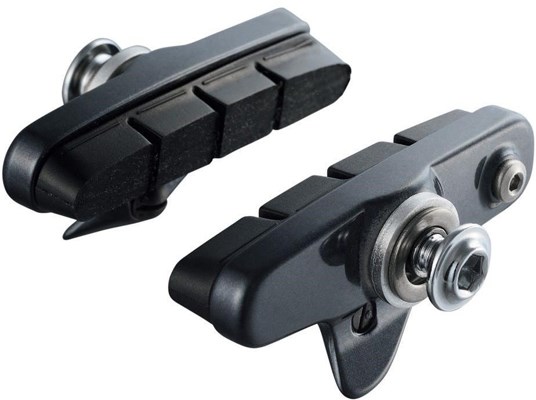
Brake Rotors
Disc brake rotors give a smooth and perfectly flat braking surface for the brake pads. There are two types of mounting types, 6 bolt rotors attach to the hub with six bolts and centre lock rotors attach with one lock-ring to the hub. To help keep a rotor cool when braking it can be constructed in different ways, such as a floating or two-piece design, or with fins to stop the rotor from overheating and losing performance.
They are available in different sizes, larger rotors give more powerful braking but are heavier than smaller rotors. If changing the size of the rotor a brake adaptor will be needed to move the calliper in or out to fit.
Shop Brake Rotors
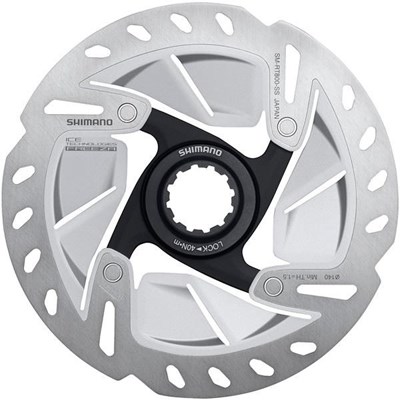
Brake Sets
Brake sets include the connected parts of a brake set up. They usually do not include rotors or adaptors. Brake sets are usually available for either rim brakes or disc brakes and include the brake lever and brake calliper along with the hydraulic hose and connections if a hydraulic disc brake set.
Cable actuated brake sets do not always include the necessary inner and outer cable. Some brake sets are sold as a pair, some are sold individually front or rear.
Shop Brake Sets
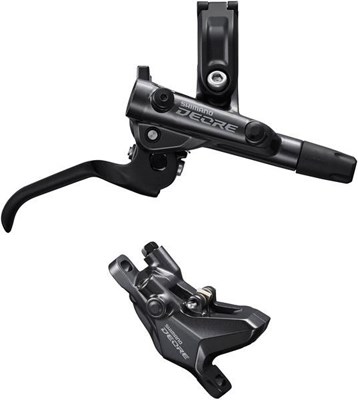
Brake Callipers
Brake callipers come in different types, but all brake callipers are the part of the brake system that push the brake pads into contact with the wheel or the rotor. The calliper can be for rim or disc and can be hydraulic or cable-actuated to suit the lever and brake system used.
Disc callipers clamp to the frame or fork connected to a cable or hydraulic hose to the brake lever. Rim brakes can use a v-brake, cantilever, or road type calliper with many options of size, mounting type and cable pull.
Shop Brake Callipers

Disc Brakes
Disc brakes are the most powerful type of brake. The brake lever pulls the disc brake calliper that then pushes the brake pads to make contact with the rotor to slow the wheel down. The disc rotor is a perfectly straight and smooth braking surface that gives a far better braking surface than the sometimes slightly buckled and dirty wheel rim. This means the brake pads can be set very close to the rotor giving a sensitive and strong brake with modulation of power.
Disc brakes are either cable actuated or a hydraulic system. The whole braking system must be changed if wishing to cross from one type to the other, the parts are not interchangeable. Cable disc brakes are still more powerful than rim brakes, but hydraulic disc brakes are far more powerful than cable disc brakes
Shop Disc Brakes
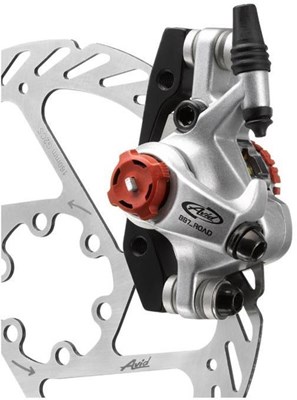
Other Brake Spares
As there are many different types of brake and many different parts in a brake system, it is understandable that there are many spare parts available.
From mounting bolts and bleeding kits to a hydraulic hose and brake lever internals, there should be a part or spare to keep your brakes functioning at their best.
